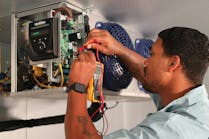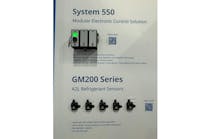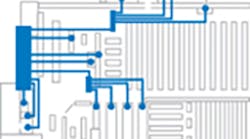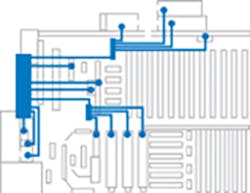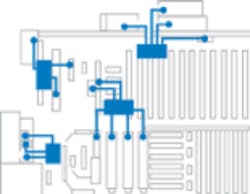When you stop and think about how much the supermarket sector has changed in just a few years, it’s no wonder that many retailers are rethinking their long-held refrigeration strategies. Of course, one of the biggest disrupters in the industry is the shrinking store format. Retailers are shying away from building the large mega centers that dominated the landscape only a decade ago.
Instead, they’re opting to expand their brand footprints into smaller stores, often located within densely populated areas, where corner store convenience appeals to shoppers.
This new small-format emphasis means retailers not only have to be much more in tune with what shoppers want in these stores, but they also need refrigera- tion strategies which preferably scale to accommodate both their large- and small- format footprints.
The ongoing food retail evolution
The small-format trend is part of a larger evolution impacting food retail, and as a result, refrigeration. While retailers are con- tinually reformatting and refurbishing their big-box supermarkets with new layouts — particularly to expand on their fresh perishable offerings — they’re also trying to exploit other emerging opportunities and innovations that offer the potential to expand their presence and appeal to consumers’ desire for convenience. Some of these strategies include:
- Partnering with non-food retailers to reformat a portion of their stores to offer groceries
- Converting abandoned shopping malls into food halls, which may also include small-format markets
- Introducing an omnichannel option such as click-and-collect or delivery
The bottom line is food retail is changing; with it, refrigeration architectures and controls must also adapt. But at the same time, most retailers are unwilling to make their refrigeration portfolios difficult to manage or introduce widely varying architectures that would complicate service, maintenance or operational activities.
Fortunately, they have a variety of options from which to choose.
Scale Down or Start Small?
Traditionally, large supermarkets have well more than 100 cases, with a mix of medium- and low-temperature cases supported by centralized refrigeration racks; these racks were set up with controls designed to optimize large systems of this type. It stands to reason that if you shrink these systems down for smaller formats with less merchandise, operators may not need as many racks. With stores shrinking from more than 100,000 square feet to less than 20,000 square feet, they simply don’t need the same refrigeration horsepower.
Centralized architectures
In many cases, operators may still want to use centralized architectures for both medium- and low-temperature cases, but with scaled down versions for the smaller format. So, instead of having two racks for medium temperature and one rack for low temper- ature, we can design a system with one rack to manage both. And since it’s a much smaller centralized system to support fewer case lineups, it has much shorter refrigeration lines running out to the cases.
From a system controls standpoint, a centralized architecture between large and small centralized refrigeration won’t be drastically different, so retailers can achieve relatively the same look and feel in both large and small store formats — it’s flexible enough to scale across the spectrum of store sizes.
Distributed architectures
While distributed refrigeration systems are preferred in large supermarkets in Europe and other global regions, they’re also well- suited for the small-format emergence in the U.S. There may even be some inherent advantages for smaller architectures, including:
- Reduced footprint due to a smaller mechanical room (or potentially none at all) for refrigeration racks
- Greater case location flexibility
- Lower refrigerant charge
- Wider range of refrigerant options
Distributed architectures also have a greater impact on the way controls are set up and utilized. In a distributed scenario, electronic controllers are installed at the refrigeration cases. Additional sensors are typically required to capture data, allow for better control and support remote trouble- shooting activities.
In a typical scenario, the electronic controllers communicate to a central facility management system (also known as an “energy management” or “building automa- tion” system) via a “daisy chain” type of communications cable. This energy manage- ment system would then provide key supervisory functions such as: user interface; data logging; user management; and remote connectivity capabilities. It is important to consider all of these aspects when creating a distributed control system. Not only do they offer added convenience, they also serve as a means to capture data from the electronic controllers, which can then be utilized for troubleshooting and overall optimization of a refrigeration system.
Distributed refrigeration architectures come in different formats and may also provide a more cost-effective refrigeration strategy, especially in smaller stores. These types of systems include “self-contained” cases (i.e., a completely integrated refrigeration system within the case) or modular refrigeration systems that can support small lines of cases sharing similar characteristics. Self-contained cases also provide spot merchandizing flexibility, and may also utilize distributed electronic controls that tie into the facility management system, as noted herein.
We know that the use of case controls in large stores has proved effective for years, and this control architecture can be scaled down for smaller formats. Many would agree that distributed architectures have certain advantages regardless of store size, but in a smaller store these benefits may be even more noticeable.
Enterprise management control integration
Integration with enterprise management systems is a key refrigeration system require- ment for most modern retailers, regardless of the size of their operations. This includes the ability to exercise site- and enterprise- wide control over facility systems such as HVAC, lighting and refrigeration. To help ensure this integration, retailers should make sure that the distributed electronic controllers are compatible with their preferred facility management and enter- prise management systems.
Streamline enterprise control with a standardized footprint
For retailers with multi-site networks of large- and small-format stores, it’s important to select refrigeration architectures and control platforms that provide a standardized view, regardless of the store format. It’s simply not effective to introduce a completely foreign strategy when adding smaller-format stores. This doesn’t mean that if you have 100 stores with a centralized system you can’t try a distributed architecture in your next store, but it does mean that you should likely select control and facility management systems that support the flexibility to:
- Accommodate distributed and centralized approaches
- Scale from large- to small-format refrig- eration systems
- Establish a common control platform across the enterprise
It’s also important to look for a platform that can support the evolution of IoT in refrigeration and facility management. These systems represent the next generation of operational efficiencies by offering cloud connectivity, predictive maintenance and advanced multi-site management software.
Without question, the future of refrigera- tion is rapidly approaching. New technologies are emerging in other industries to help better optimize plant operations. These include the concepts of “digital twins” — which provide an “early failure warning system” by running a simulated operational model using a cloud-based service — or prescriptive machine learning models that can predict failures as well as define specific actions.
These and other new technologies may soon offer supermarket operators a new choice — one that allows them to help manage their systems in real time to enhance profits and help deliver on the promise of providing high-quality food to their customers. The ability to have a “connected store” where all control elements are connected to the facility management system (even distributed electronic controllers) will be essential to realizing the benefits of these new technologies as they become available.
John Wallace is director of innovation for Emerson Commercial & Residential Solutions.







